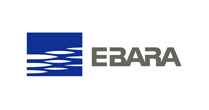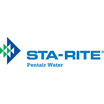Tired of poor water pressure? Looking for a smooth shower pressure 24/7? For homes with low pressure, Pennsylvania water booster pumps are the best solution! These are equipped with centrifugal pumps that are regulated by a variable frequency drive (VFD) to control pump operation and maintain constant water pressure.
Features of Pennsylvania Variable Booster Pumps
Regardless of varying water demand or fluctuating pressure,PA variable booster pumps can be a good fit for low city or well water pressure. Read on to discover the main benefits of Pennsylvania water booster pumps:
- Energy-Efficient Operation
- Residential and Commercial Application
- Quiet and Compact
- Small and Transportable
- Plug-and-Play Installation
- VFD-Driven Controlled Pump
- Advanced Technology
- Low Environmental Impact
- Competitive Price
- Incredible Customer Service
These water booster pump systems are easy to operate as they consume less energy than other types of pumps. They have fewer plumbing and piping requirements. They are proven for delivering better performance and have increased energy savings over the old-school pumps that follow the “bigger is better” approach.
Pennsylvania water booster pumps cater to a variety of applications, ranging from irrigation to manufacturing to household. They can help you improve the water situation in residential, commercial, and industrial buildings. In addition to that, these pumps work efficiently, helping improve the water flow, supply, and pressure in each of these buildings.
Most water booster pumps from the past were noisy, so nobody liked their sound. However, Pennsylvania water booster pumps do not produce any loud sounds. They exclusively use Yaskawa IQ and don’t generate high vibrations when operating. So, these pumps run quietly while being compact and powerful.
Booster water pumps are small and portable, making them easy to transport. This simply means that they can easily be installed anywhere in your home without having to make major plans to have them installed. These booster pumps can be easily installed anywhere, helping you improve your water supply wherever you need it.
Pennsylvania water booster pumps have something that allows them to stand out above the rest of the other pumps. For instance, they come with plug-and-play installation. Not only do they allow ease of installation, but they are also compact enough to fit into tight spaces. Just plug them in and you’re ready to boost your water pressure!
VFD pumps are generally sized to operate near the best efficiency point at maximum flow. They are able to achieve reduced flow by providing variable speed pump operation, which also results in reduced system pressure and operation near the system’s best efficiency point. Additionally, maintenance costs may be reduced.
Since these water booster systems use Yaskawa technology, they can stop and start at standard power. This simply means that they are extremely sustainable when you are considering green water pump solutions that leave a low impact on the environment.
Water booster systems from the past were built with little to no thought of the energy needed to power them, leading consumers to be unhappy with the amount of money they had to spend on running costs. That’s why Pennsylvania water booster pumps focus on collaborating with leading engineers and specialists in the industry to ensure green water booster pump technology.
Compared with expensive water pressure boosters, Pennsylvania water booster pumps help customers reduce a good amount of energy cost. They are able to achieve constant pressure without interfering with the water supply. They can also make the main pump sleep automatically, greatly reducing energy loss during low-consumption hours. Also, the maintenance cost is low compared to other traditional water booster pumps.
PA variable booster pumps are extremely customer focused as they come with everything you need to ensure hassle-free installation, care, and maintenance. At Callaghan Pump, you can talk to a real person – someone who understands your needs and challenges. The professional will provide you with the right information and guidance.
In Conclusion
With numerous types of water booster pumps available in the market today, it is easier than ever to get overwhelmed with a decision to make for your specific water-boosting application. Luckily, you can choose from Pennsylvania water booster pumps that are driven by customer satisfaction, ease of installation, and energy efficiency. To learn more about Pennsylvania variable booster pumps, please contact us.













